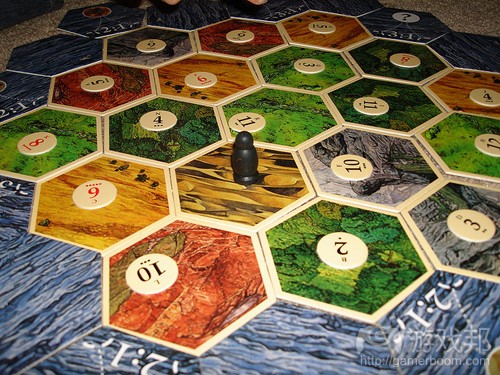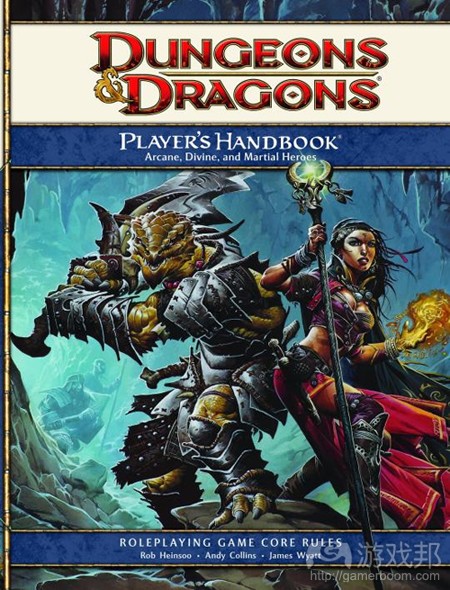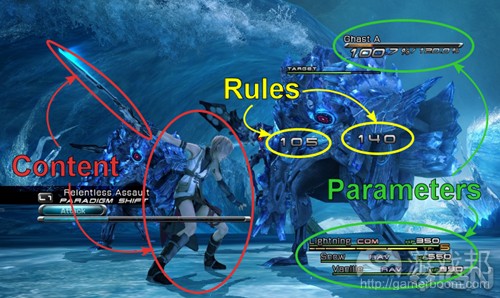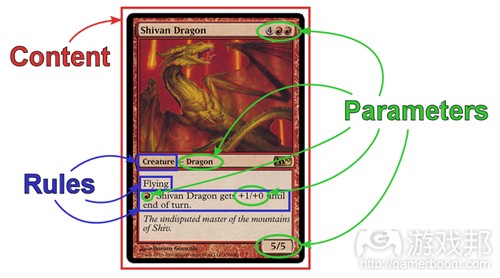分享构建游戏系统的通用指导性建议
作者:Daniel Achterman
我是个游戏设计师。从业8年以来,我负责过各种题材游戏的玩法和系统设计,其中多数是RPG,在Gas Powered Games和ArenaNet等公司待过。
编写本系列文章的目的在于分享游戏设计师可以用来构建系统、调整内容和简化个人生活的实用性建议和技术。本将分享某些通用的做法和我觉得有用的做法。
优秀游戏系统的特点
RPG和战略游戏通常有着大量的内容。优秀的系统不只会定义这些内容的运行方式,它们还拥有供设计师使用来生成、调整和管理这些内容的工具。
从设计师的角度来看,优秀的系统应当具有5个特征:可理解、一致性、可预测、可扩展和简洁优美。
可理解。作为设计师,你应当理解系统的各个部分。你应当知道要如何在游戏中选择各种价值,为何要采用这种做法以及这些价值可能影响到哪些其他的规则和内容。如果你想要以某种特定的方式调整游戏玩法,你应当知道要改变那些内容才能够得到所要的结果。
一致性。你的游戏规则和内容在游戏的所有区域中都应当有相同的功能。护甲对飞行单位和陆地单位的作用相同,道具价格的计算公式不应当有大幅变动。这是增加游戏可理解性的重要部分。
可预测。你应当可以断定系统在新的情形下会有怎样的表现。如果你在某些情形下将玩家获得的经验值提升到原来的2倍,或者加入有着双倍护甲的怪物,你应当可以对这些设置的结果做出预测。使用简单的公式来帮助你制作出可预测系统。
可扩展。当你为游戏创造新类型的内容时,你应当可以轻易地扩展现有的系统以便将其包含其中。你随后可能会发现自己的游戏真正需要的是随机生成的miniboss。
你应当可以将现有的怪物内容进行扩展,简单地将新的怪物容纳其中。扩展性使得你可以更为简单地重复设计自己的游戏,在需要的时候添加新的系统和内容。
简洁优美。简洁的系统有以一定的好处。少数移动的部分就可以创造出很丰富的情境。我最喜欢的简约系统设计范例包括《4th Edition D&D》、《万智牌:旅法师对决》和《卡坦岛》。
游戏系统服务于游戏玩法
创造游戏系统和内容是项艰巨的任务。游戏行业中似乎有着上百万个变量,在你开始弄清楚这些变量的关系之前,就必须选择自己游戏中会涉及到的变量。
游戏角色将含有何种属性?升级后哪些层面会提升?角色可以在哪些方面进行升级?道具?资源?经验值?金币消耗?这里会涉及到大量的内容。
第一个步骤是先弄清楚你正在制作的游戏。尽管系统是游戏运转方式的基础,但是不应当在设计的开始考虑这个方面。
或许你对游戏中的某些设计有很棒的想法,比如游戏中能量的恢复机制,或者武器类型会对等级造成某种影响。现在先将这些想法抛在脑后,问问你自己:核心游戏循环是什么?玩家将做哪些有趣的决定?你想让游戏展现出何种吸引力?
这些游戏层面是玩家最早接触到的,所以在设计系统时应当以传递你所设想的游戏体验为目标。形式遵从于功能,系统遵从于游戏玩法。
案例研究:龙与地下城
《龙与地下城》是款奇幻背景的角色扮演游戏,玩家可以同好友一起冒险。在游戏体验中,团队协作是个重要部分。角色轮流做出行动,而这些行动的成功与否和结构都由系统来决定。
为侧重团队协作,游戏中设置了各种类型的挑战(游戏邦注:战斗、陷阱和社交互动)和战斗角色(游戏邦注:防御者、攻击者和治疗者)。
作为系统设计师,上述描述将引导你开展如下工作:
1、为鼓励团队合作,系统应当让角色只擅长于某种特定类型的挑战和战斗角色。
2、角色扮演和非战斗玩法很重要,因而社交资料也应当发挥作用。
3、玩家沉浸性和角色扮演都很重要,所以奇幻背景下的游戏内容应当能够让玩家感到兴奋。
4、决定行动结果的计算公式应当易于理解,简单不复杂。
游戏系统成分
“游戏系统”或“机制”可以分解成3个成分:参数、规则和内容。
1、参数:参数是游戏系统用来模拟游戏的数值,比如生命值、移动速度、重量、能量消耗、爆击机率等。
2、规则:规则是决定游戏中行动和事件结果的功能和公式。规则包括如何计算战斗伤害、角色升级时属性如何改变和战利品如何随机掉落等。
3、内容:内容是指游戏内的所有东西,包括角色、道具、怪物、咒语等。每种类型的内容都有定义其的参数,比如武器的伤害值或者角色的属性等。
在这个《最终幻想13》的截图中,内容有怪物、角色和他们所使用的武器。参数是影响战斗的数值,比如他们的生命值。当英雄攻击怪物时,规则使用角色参数和部分随机性来决定所造成的伤害值。
再看另一个例子,《万智牌:旅法师对决》中的内容就是卡片。游戏中的每张卡片都代表着玩家可以召唤出的某种实体,比如某种生物或土地,或者代表玩家可以施展的某种行动,比如用咒语攻击。
规则定义了不同类型的卡片以及他们施展功能的方法。图片中生物的特殊能力也属于规则,它定义了这张卡片在游戏规则下的功能。这种生物的类型、状态和能力值都属于参数。
通过5个步骤设计游戏系统
做好准备之后,将系统设计这个任务分解成各个部分,每次解决一个部分。以下是我用来设计和重复修改游戏系统的方法和过程:
1、选择游戏所使用的参数。
2、设计实现游戏愿景的必要规则。
3、定义参数在游戏期间如何改变。
4、尽你所能将内容类型设计得更加复杂和有趣。
5、添加所需的新参数、系统和内容类型。
将参数放在第一步,因为选择参数可以帮助你决定游戏系统将呈现出何种游戏玩法。同时参数与内容紧密相关,如果你一开始就考虑将出现在游戏中的所有内容,那么很容易让参数列表变得繁琐复杂。
以决定参数作为开始,然后奠定它们互动的规则,可以帮助你理清思路,保持内容和规则的简单性。
我的下篇文章将从更细节化的层面来阐述这个过程,指导大家如何选择参数、设计规则和设计内容类型才能够得到既强大又灵活的系统。
结语
游戏设计是门艺术。内容的质量和各种设计选择的吸引力都是主观的,玩家之间各不相同。优秀系统设计堪称手工艺品。
游戏系统是设计师用来创造和修改内容的工具。就修改和添加的简易性而言,某些系统设计在客观上的确比其他游戏做得更好。
我很喜欢在游戏系统中投入时间。我喜欢调查设计师如何组织数据,努力去弄清楚为何他们会使用哪种计算公式。我希望这篇文章对你有所用处,期盼不久之后能够分享更多的技术和范例。(本文为游戏邦/gamerboom.com编译,拒绝任何不保留版权的转载,如需转载请联系:游戏邦)
The Craft of Game Systems: General Guidelines
Daniel Achterman
My name is Daniel Achterman, and I’m a game designer. I’ve been doing gameplay and system design in a variety of genres for about 8 years, mostly RPGs, at companies like Gas Powered Games and ArenaNet.
My intention with these pieces is to share specific, practical advice and techniques that game designers can use to create systems, tune content, and simplify their lives. This first piece shares some general guidelines and best practices that I’ve found useful.
Future articles will cover topics like experience curves, calculating values for content like item stats and ability damage, and managing large amounts of game data.
If you ever have a question or want to start a conversation, you can reach me in several ways:
Add a comment to this post.
Send me a message on Twitter: @DanielAchterman
Send me an e-mail at DanielAchterman@gmail.com
What Games Is This Best For?
The approach to game design in these articles is analytical and methodical. It’s best suited to games with a lot of content, like RPGs or strategy games.
These articles are more about the hour-to-hour experience than the minute-to-minute experience, so they won’t apply to many types of games. My apologies if this material doesn’t directly translate to your work – I hope you can still find them valuable.
The Hallmarks of Good Systems
RPG and strategy games tend to have a ton of content – more than any one person can keep in their head at once. Game systems don’t just define how that content works – they are a tool that designers use to generate, tweak, tune, and manage that content.
From a designer’s perspective, good systems should be five things: comprehensible, consistent, predictable, extensible, and elegant.
Comprehensible. You, the designer, should understand all the parts of your system. You should know how you choose various values in your game, why you do it that way, and what other rules and content those values impact. If you want to adjust your gameplay in a specific way, you should know what to change to get that result.
Consistent. Your game rules and content should function the same in all areas of your game. Armor shouldn’t work differently for flying units, and the formula for gold value of items shouldn’t change at high levels. This is a big part of making your game comprehensible to you.
Predictable. You should be able to determine how your systems will behave in new circumstances. If you multiply experience gained by 2 in some situation, or introduce a monster with double the normal armor, you should be able to predict the results. Using simple progressions and formulas helps make predictable systems.
Extensible. When you create new types of content for your game, you should be able to easily extend your existing systems to include it. Maybe you decide what your game really needs is randomly generated minibosses.
You should be able to extend your existing monster content to include them easily. Extensibility makes it easier to design your game iteratively, adding new systems and content types as they are needed.
Elegant. Elegant systems have a certain … je ne sais quoi. They create extremely rich situations from a small number of moving parts. Some of my favorite examples of elegant system design are 4th Edition D&D, Magic: the Gathering, and Settlers of Catan.
Getting Started: Game Systems Follow Gameplay
Creating a game’s systems and content is an intimidating task. It can seem like there will be a million variables in the game, and before you can start figuring out how they’ll relate to each other, you have to choose which ones your game will have in the first place.
What stats will your game characters have? What will increase on level up? What types of upgrades can characters get? Items? Resources? Experience values? Gold costs? It’s overwhelming.
“Begin with the end in mind.” – Stephen Covey
The first step is to clarify the game you’re making. While systems are the foundation of how a game works, they shouldn’t be the starting point of its design.
You might have a great idea for how mana regeneration will work in your game, or how leveling will be affected by weapon types. Leave those ideas aside for now, and instead ask yourself: What is the core game loop? What interesting decisions will players be making? What are the appeals you intend your game to have?
Those are the aspects of your game that players engage with most immediately, so your goal when designing systems should be to support the game experience you intend. Form follows function, and systems follow gameplay.
Case Study: Dungeons and Dragons
Dungeons and Dragons is about role-playing characters in a fantasy setting and going on adventures with your friends. Teamwork and cooperation are an important part of the experience. Characters perform actions in turn, with the chance of success and results of those actions defined by systems.
To make cooperation matter, there are a variety of types of challenges (combat, disarming traps, social interactions) and combat roles (defender, striker, support) that characters can be strong or weak in.
As a systems designer, the above description would direct my work in several ways:
To encourage teamwork, systems should allow characters to excel in certain types of challenges and combat roles, but not others.
Role-playing and non-combat play is important, so social statistics should be meaningful.
Since immersion and role-playing are important, the content of the game should be flavorful and exciting in a fantasy setting.
The math to determine the results of actions should be comprehensible and uncomplicated.
The Components of Game Systems
“Game Systems” or “Mechanics” can be broken down into three components: Parameters, Rules, and Content.
Parameters: Parameters are the values that your game systems use to simulate your game, such as health, movement speed, weight, mana cost, critical hit chance, etc.
Rules: Rules are the functions and formulas that determine the results of actions and events in your game. Rules include things like how combat damage is calculated, how character statistics change when they level up, and how random loot is determined.
Content: Content is all things in your game, including characters, items, monsters, spells, talents, etc. Each type of content has parameters that define it, like damage for a weapon, or attributes for a character.
In this screenshot of Final Fantasy XIII, the content is the monsters, characters, and the weapons they’re using. The parameters are the values for all of their stats that affect combat, such as their health. The damage values when the hero strikes a monster are determined by rules, using the character parameters and some randomization.
For a different kind of example, the content in Magic: the Gathering is the cards. Each card in the game represents a noun that players can summon, like a creature or land, or an action that players can perform, like casting a spell.
The rules define the different types of cards and how they function. This creature’s special abilities also fall under rules, as does its “Creature” type, as that defines its functionality in the game’s rules. The creature type, costs, stats, and ability values are all parameters.
Designing a Game System in Five Steps
Once you’re ready, break the task down into pieces and tackle one at a time. This is the process that I use to design and iterate game systems:
Choose the parameters that your game uses.
Design rules that are no more complex than necessary to implement your game vision.
Define the progressions for how parameters change throughout the game.
Design content types that are as complex and interesting as you can manage.
Add new parameters, systems, and content types in layers as needed.
Parameters are the first step because choosing them helps focus what aspects of gameplay need to be reflected in your systems. While parameters are closely related to content, if you start by thinking of all the types of content your game will include, it’s easy to bloat your parameter list.
Starting with parameters and then rules for how they interact helps you make the hard cuts up front and keep your content and rules lean.
My next article will cover this process in more detail and offer guidelines for how to choose parameters, design rules, and design content types that will result in a system that is powerful and flexible.
Conclusion
Much of game design is an art. The quality of content and the appeal of various design choices are subjective and vary from player to player. Good system design is more of a craft.
Game systems are a tool that designers use for creating and tweaking content. In terms of ease of tweaking and resistance to degenerate cases in games, some system designs are objectively superior to others.
I adore investigating game systems. I love seeing how designers organize their data, reverse engineering their content progressions, and trying to figure out why they used the formulas they did.
I hope you enjoyed this introduction, and I’m looking forward to sharing more techniques and examples soon. Please let me know what you think in the comments! (Source: Gamasutra)
上一篇:解析优秀冒险游戏的10大设计要点
下一篇:游戏设计师需考虑的10大重要决策











































 闽公网安备35020302001549号
闽公网安备35020302001549号